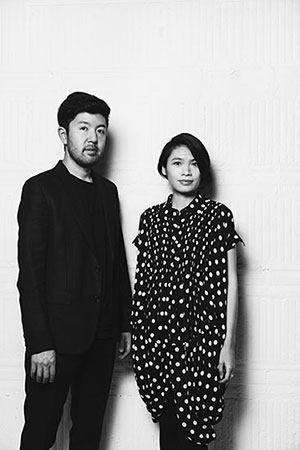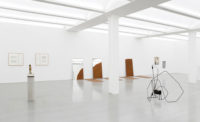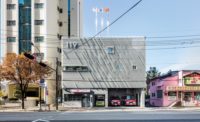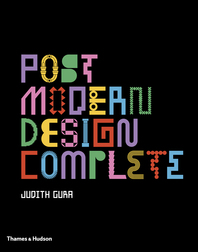Since establishing the design and architecture studio Uufie in 2009, Irene Gardpoit, 38, and Eiri Ota, 37, have undertaken an eclectic mix of commissions around the world, from an apartment renovation in Tokyo to the atrium design for the Paris department store Printemps. Their most recent project, an outdoor installation at the University of Toronto, where Gardpoit received a B.Arch, comprises over 100 security mirrors arranged in a ring on the ground in a historic courtyard. The piece is called Wa-Wa after the Japanese concept of Wa, which connotes a peaceful unity. “It was a subtle way to create spontaneity,” says Gardpoit. “People see these objects that appear like water droplets, and they become curious about the site.”

Uufie’s roots formed in Japan. (The couple are secretive about the origin of the name.) Gardpoit, who is Canadian, and Ota, who is Japanese, met in Tokyo in 2007 when she was working for Arata Isozaki, and he for Jun Aoki. Each was about to embark on a solo career, and they decided to team up and tackle their separate commissions together. Since then, the two have been personal and professional partners.
One of the pair’s first projects, a small cottage near Kawartha Lakes in Ontario, completed in 2013, presented the opportunity to relocate to Toronto, which, according to Ota, has been a more culturally diverse place to develop the practice. “There’s also the luxury of space here,” adds Gardpoit, “and that allows us to create and store large-scale prototypes that would be hard to do in Tokyo.” These mock-ups include furniture, ranging from an acryclic chair resembling a peacock to wood and metal tables that look like natural stones.
For the cottage, designed to be a flexible space for reading and sleeping, the two riffed off traditional forms and motifs. A sharply gabled roof is clad in black steel, the walls in charred cedar, and the entrance wall and soffit of the porch—formed from a deep cut in the volume—surfaced in mirrors to reflect the surrounding woods. “We wanted to create a new relationship between nature and the building,” explains Ota.
Inside, the designers cut out squares on the underside of the roof; on one side, these slots are glazed, while on the other, blue-stained shingles were inserted, creating an eccentric allusion to the sky. This inventive use of materials and attention to visual perspective are common in Uufie’s practice.
For the 2009 Nagi apartment renovation in Tokyo, for instance, the designers found that melting rayon onto velvet curtains gave both weight and transparency for diaphanous partitions in a railroad-style space. In Shanghai, they used glass block to transform the facade of a retail store, completed in 2015, into a three-dimensional iceberg-like structure that glows at night.
Going forward, Gardpoit and Ota hope to take on projects with a range of programs, but are intent on keeping a small studio, which allows them to collaborate closely with clients and a regular roster of international consultants, such as textile designer Yoko Ando and lighting designer Izumi Okayasu. While “our consultants are always taking the designs to the next level,” says Ota, the designers also find that new ideas often come from clients. “If the client has a vision and can bring something that we don’t know,” says Gardpoit, “that motivates us.”
Uufie
FOUNDED: 2009
DESIGN STAFF: 4-6
PRINCIPALS: Irene Gardpoit and Eiri Ota
EDUCATION: Gardpoit: University of Toronto, B.Arch., 2002. Ota: Musashino Art University, B. Arch., 2002
WORK HISTORY: Gardpoit: KPMB, 2011–13; Arata Isozaki and Associates, 2003–08. Ota: Yabu Pushelberg, 2011–13; Jun Aoki and Associates, 2002–08
KEY COMPLETED PROJECTS: Printemps Haussmann Atrium, Paris, 2016; Ports 1961, Shanghai, 2015; Lake Cottage, Ontario, 2013; Nagi, Tokyo, 2009
KEY CURRENT PROJECTS: Ports 1961, Hong Kong; mixed-use building, Ontario; Valhalla Residence, Michigan; Georgian Bluff residence, Ontario; Senzoku House, Tokyo












Post a comment to this article
Report Abusive Comment